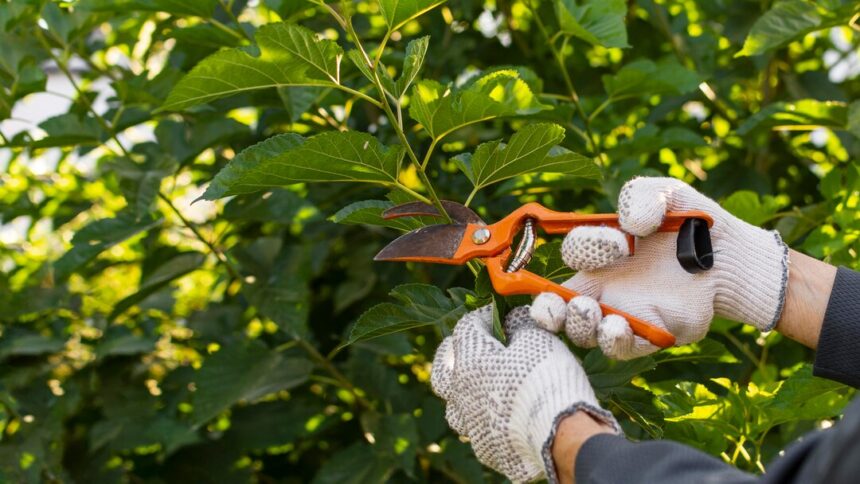Pruning is a crucial task for South African farmers who want to ensure healthy, productive plants. Whether it’s for fruit trees, vineyards, or ornamental plants, efficient pruning helps improve growth, increase yields, and maintain plant health. Here are some practical tips for efficient pruning that can benefit farmers across the country.
1. Understand the Best Time to Prune
The timing of pruning depends on the type of plant you are working with. Generally:
- Deciduous Trees: Prune in winter or early spring when the tree is dormant.
- Fruit Trees: Prune just before or during the dormant season to remove dead wood and encourage new growth.
- Evergreens: Prune lightly in late winter or early spring to maintain shape without removing too much foliage.
Tip: Avoid pruning during extreme temperatures or when plants are stressed, as this can weaken them.
2. Use Sharp, Clean Tools
Sharp and clean pruning tools make the job easier and reduce the risk of infection.
- Bypass Pruners: Ideal for cutting small branches.
- Loppers: Best for medium-sized branches.
- Pruning Saws: For larger branches that are too thick for loppers.
Tip: Regularly sharpen your tools and disinfect them between cuts to prevent the spread of diseases.
3. Cut at the Right Angle
Make sure to prune branches at a 45-degree angle to encourage quick healing and prevent water accumulation, which can lead to rot.
- Make Clean Cuts: Avoid jagged cuts, as these can invite pests and disease.
- Remove Dead or Diseased Wood: Always cut just above a healthy bud or lateral branch.
4. Prune to Shape, Not Just for Size
When pruning, it’s important to maintain the natural shape of the plant while removing excess growth.
- Open the Canopy: Thin out crowded branches to allow sunlight and air circulation to the inner parts of the plant.
- Balance Growth: Avoid cutting too much from one side of the plant. Aim for a balanced, symmetrical shape.
Tip: Regular, light pruning is more effective than heavy cuts, which can stress the plant.
5. Know What to Remove
- Dead Wood: Remove any dead or diseased branches to prevent the spread of disease.
- Crossing Branches: Prune branches that cross over each other, as they can rub together, causing wounds.
- Water Sprouts and Suckers: These are vigorous shoots that grow straight up from the base or along branches. Removing them helps the plant focus its energy on productive growth.
6. Understand the Plant’s Growth Habit
Each plant species has different growth habits and responds differently to pruning.
- Vineyards: For grapes, prune during the dormant season to remove older wood and encourage strong, healthy vines.
- Fruit Trees: Focus on pruning to remove weaker branches and allow for better fruit production.
- Bushes and Shrubs: Trim to maintain shape and remove dead or leggy stems.
7. Prune in Stages
For large, mature plants or trees, prune gradually over a few seasons to avoid shock.
- Remove a Third at a Time: Avoid cutting more than a third of the plant’s size in one go.
- Focus on Health First: Always prioritize removing dead, diseased, or damaged branches before shaping the plant.
8. Mulch After Pruning
After pruning, adding mulch around the base of the plant helps retain moisture and regulate temperature. This is particularly beneficial in areas with hot, dry climates like much of South Africa.
- Use Organic Mulch: Apply a layer of organic mulch, such as straw or wood chips, to protect the roots and keep the soil fertile.
9. Monitor the Results
After pruning, observe the plant’s response. Healthy plants should show new growth and improved structure. If the plant seems stressed or doesn’t recover well, you may need to adjust your pruning approach in the future.
10. Stay Informed and Keep Learning
Every year brings new challenges, from changing weather patterns to evolving pests and diseases. Stay informed about the best pruning practices for your specific crops and seek advice from local agricultural experts.
Tip: Join local farming forums or attend workshops to stay updated on pruning techniques and trends in the South African agricultural community.
Efficient pruning is a skill that, when done correctly, can significantly enhance the health and productivity of your plants. By using sharp tools, pruning at the right time, and understanding the needs of your crops, you can improve yields, reduce disease, and maintain strong, healthy plants. Whether you’re managing a small orchard or a large vineyard, implementing these pruning tips will help your farm thrive.
Join 'Farmers Mag' WhatsApp Channel
Get the latest Farming news and tips delivered straight to your WhatsApp
CLICK HERE TO JOIN






